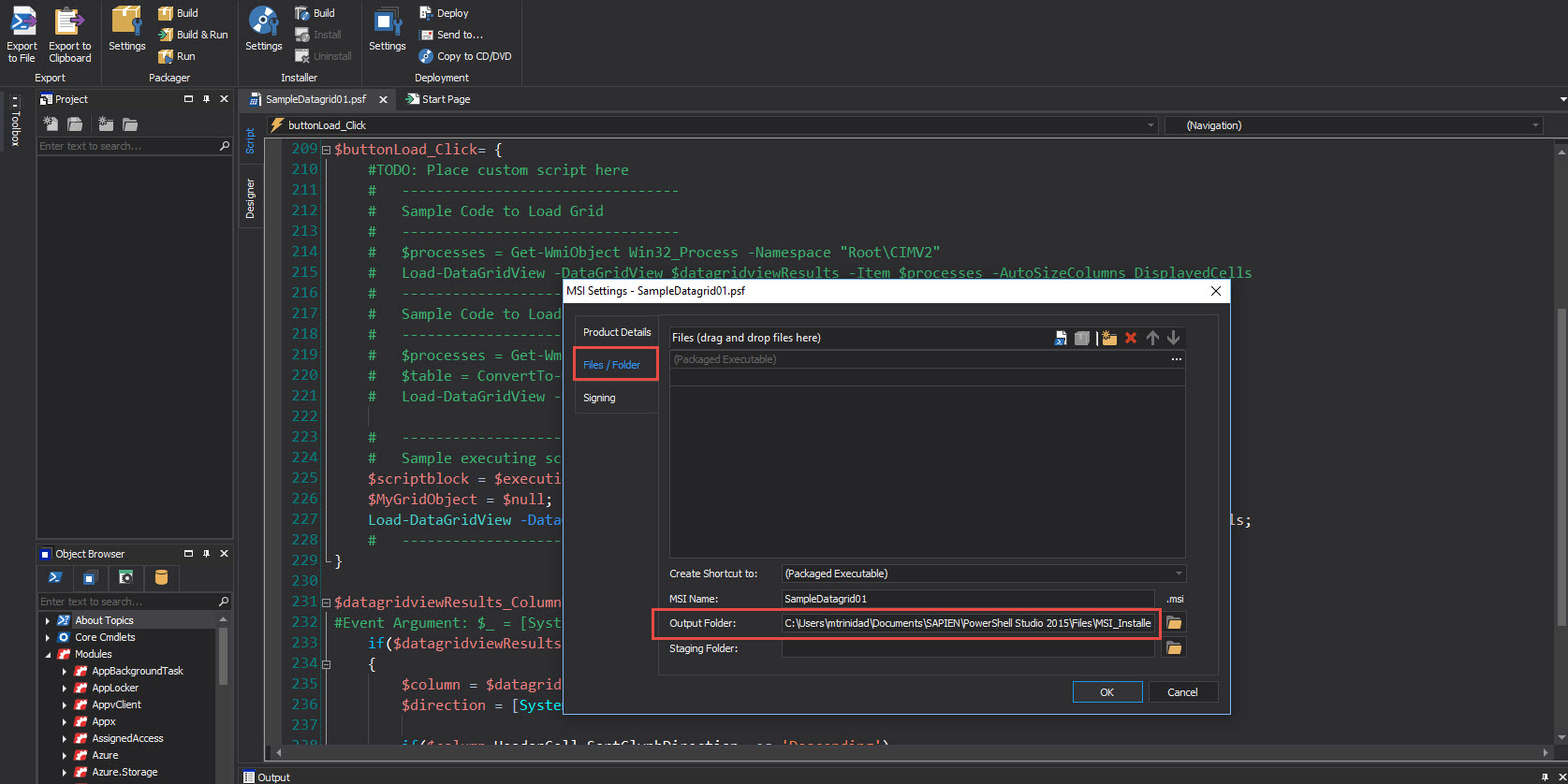
They focus on features that communicate with the Internet and aren't intended to be an exhaustive description. Use the MSI Settings to configure the MSI file.Windows 8 and Windows Server 2012 Privacy Statement (“Windows Privacy Statement”) explain at a high level some of the data collection and use practices of Windows 8 and Windows Server 2012 (“Windows”).Click Deploy and, in the Installer section, click Settings.To create a package with multiple script types, create a Microsoft Installer (MSI) file. However, because the package contains one script engine, basic packages can contain only one type of script.
#Sapien powershell studio executable test scheduler windows#
You can create executable packages for VBScript (VBS files), JScript (JS files), Windows PowerShell scripts (PS1 files), and HTML Applications (HTA) files. Use the Version Information settings to specify characteristics of the current version of the executable file. Use the Execution Restrictions to limit the environment in which the package runs. If you do, the system prompts for credentials (unavailable to the non-administrator user) before Create an executable with the script and an elevation manifest.ĭo not add an elevation manifest to the empty executable.txt file) and set Run Mode to RunAs and specify theĬredentials of an administrator. Create an empty executable (no files or a.If the end-user is a not a member of the Administrators group on the computer, create two executable files.If the end-user is a member of the Administrators group on the computer, set Manifest Creation to Embed a manifest for elevation.Do not specify a domain or computer name for local To specify a domain, use format, not domain\user format. In addition, the credentials must generally have local administrator privileges on the computer where theĬompiled package will run. The alternate credentials you supply must be available (either as local or domain accounts) on anyĬomputer where the compiled package will run. Name and password) that will be used to run the scripts. However, you can specify alternate credentials (a user PowerShell must already been installed wherever you will be executing the packagedīy default, the scripts in a package run in the security context of the user who runs the package. The SAPIEN Script Host is included in the package and does not It executes entirely in-memory and does not use temporary files. SAPIEN Script HostĬan run VBS and JS files. They write the script as a temporary file which is removed after the package completes. WScript and CScript can run VBS and JS files. network profiles, mapped drives,Įnvironment variables) of the current user.įor detailed instructions about installing certificates, see "Script Signing" in Windows Script Host and Windows PowerShell Features. Impersonate user: Switches to the security context of the specified user, but uses the environment (e.g. RunAs: Runs scripts with the permissions of the specified user in the specified user's environment. Uses the credentials of the specified user to run the scripts in the executable file.Ĭurrent user: Runs scripts with the permissions of the user who runs the executable file. (This is an executable manifest, not a Windows PowerShell module manifest.) Options for the manifest file, including a custom manifest. To include more than one script type in an executable file, create an MSI file.

The platform that runs the scripts in the package.Įach package contains only one platform. The Script Packager contains everything you need to create your package. You click Package, PowerShell Studio opens the Packager Settings window.Ĭlick Deploy and, in the Packager section, click Settings.

If you have never used the Script Packager in PowerShell Studio, when PowerShell Studio makes it easy to customize the executable files that you create. If your build is successful, the Buildwindow displays information about the new executable file: PowerShell Studio checks the syntax of the packaged files and compiles them into an executable file (.exe). Here you will have the option to Build or Build and Run. If this is your first package, begin by setting up the Script Packager.Ĭlick Home and, in the Deploy section, click Package.

After you set up the Script Packager, you can create scripts by clicking the Package button. You can create an executable file package for scripts and supporting files. PowerShell Studio contains the Script Packager™, which can package single or multiple scripts, supporting files, and COM components into a single,


 0 kommentar(er)
0 kommentar(er)
